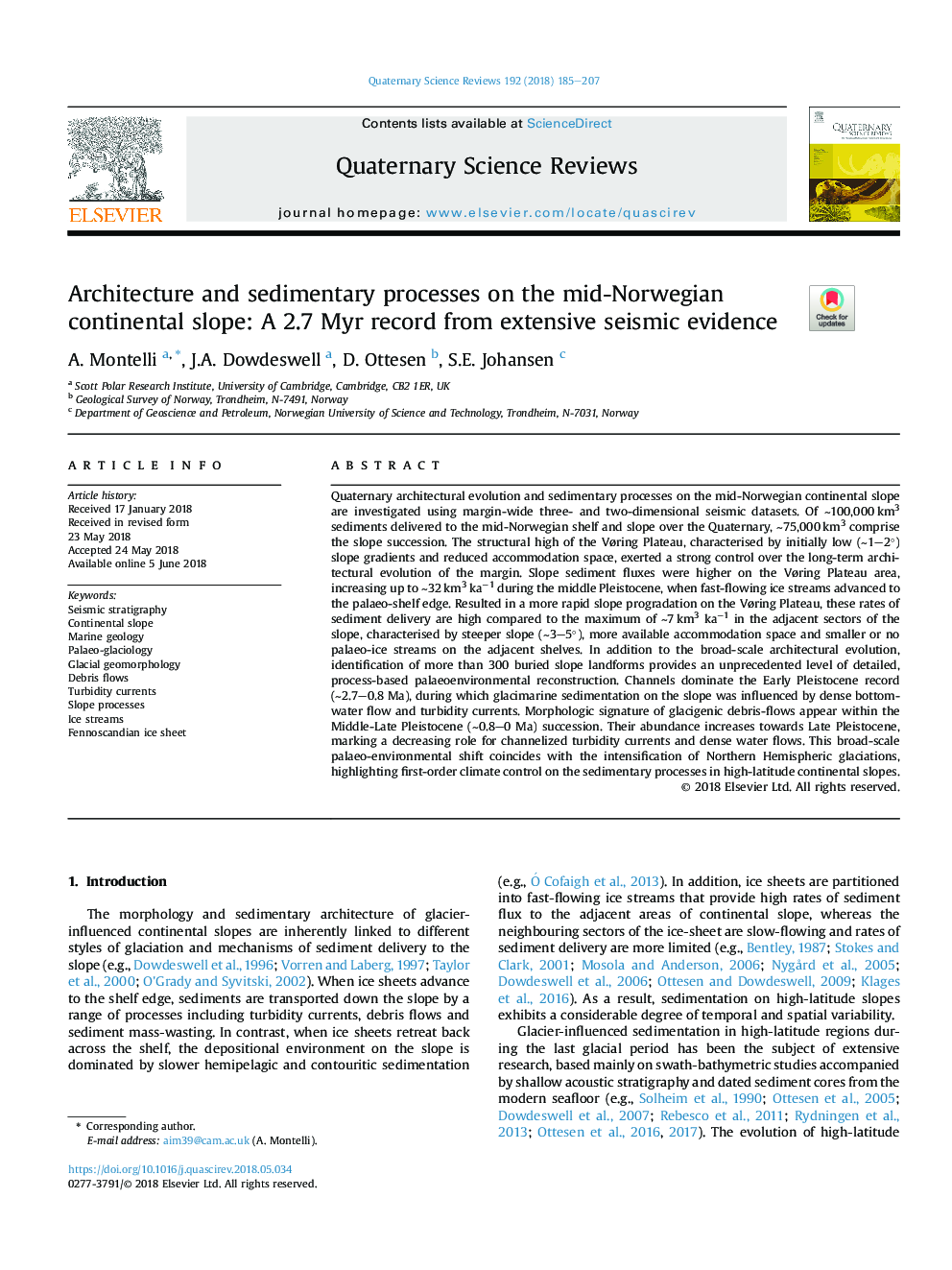| Article ID | Journal | Published Year | Pages | File Type |
|---|---|---|---|---|
| 8914721 | Quaternary Science Reviews | 2018 | 23 Pages |
Abstract
Quaternary architectural evolution and sedimentary processes on the mid-Norwegian continental slope are investigated using margin-wide three- and two-dimensional seismic datasets. Of â¼100,000â¯km3 sediments delivered to the mid-Norwegian shelf and slope over the Quaternary, â¼75,000â¯km3 comprise the slope succession. The structural high of the Vøring Plateau, characterised by initially low (â¼1-2°) slope gradients and reduced accommodation space, exerted a strong control over the long-term architectural evolution of the margin. Slope sediment fluxes were higher on the Vøring Plateau area, increasing up to â¼32â¯km3 kaâ1 during the middle Pleistocene, when fast-flowing ice streams advanced to the palaeo-shelf edge. Resulted in a more rapid slope progradation on the Vøring Plateau, these rates of sediment delivery are high compared to the maximum of â¼7â¯km3 kaâ1 in the adjacent sectors of the slope, characterised by steeper slope (â¼3-5°), more available accommodation space and smaller or no palaeo-ice streams on the adjacent shelves. In addition to the broad-scale architectural evolution, identification of more than 300 buried slope landforms provides an unprecedented level of detailed, process-based palaeoenvironmental reconstruction. Channels dominate the Early Pleistocene record (â¼2.7-0.8 Ma), during which glacimarine sedimentation on the slope was influenced by dense bottom-water flow and turbidity currents. Morphologic signature of glacigenic debris-flows appear within the Middle-Late Pleistocene (â¼0.8-0 Ma) succession. Their abundance increases towards Late Pleistocene, marking a decreasing role for channelized turbidity currents and dense water flows. This broad-scale palaeo-environmental shift coincides with the intensification of Northern Hemispheric glaciations, highlighting first-order climate control on the sedimentary processes in high-latitude continental slopes.
Keywords
Related Topics
Physical Sciences and Engineering
Earth and Planetary Sciences
Geology
Authors
A. Montelli, J.A. Dowdeswell, D. Ottesen, S.E. Johansen,
